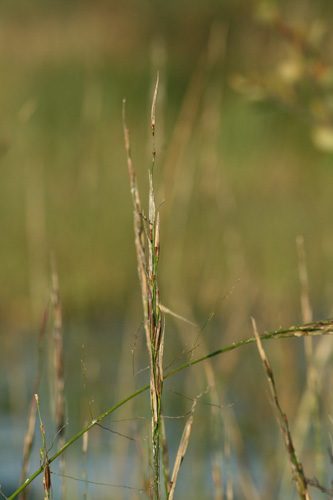Wild Rice
We stock 100% Lake Grown Wild Rice. Net weight per bag is 16 ounces and cost $14.99 each or 3 for $42.00. We ship wild rice within the United States.
For more information on purchasing Wild Rice, call us at 715-656-3116 or e-mail us.
Basic Cooking Method for Wild Rice
Rinse wild rice with running water; put 1 part rice and 4 parts water in a 3 quart pan, add small amount of salt (optional) and cover. Bring to a boil and simmer for 30 to 50 minutes, occasionally stirring with a fork until rice is softened. Re-rinse the rice after cooking is complete and enjoy!
Traditional Hand Harvesting of Wild Rice
 The Chippewa word for grain or berry is “min.” To this, the adjective “mano” meaning “good” is added to make “manomin” or good berry. This annual aquatic grass grows in the shallow, mineral-rich waters of lakes and rivers where it provides food for people and migrating waterfowl each fall.
The Chippewa word for grain or berry is “min.” To this, the adjective “mano” meaning “good” is added to make “manomin” or good berry. This annual aquatic grass grows in the shallow, mineral-rich waters of lakes and rivers where it provides food for people and migrating waterfowl each fall.
Native people have harvested wild rice for thousands of years. The earliest ricers in the area used “dugout” canoes and hand-sharpened pottery to hold their harvest.
Two people, a “poler” and a “knocker,” traditionally harvest wild rice together. As the poler moves the canoe through the rice bed, the knocker bends the stems over and strikes the knocker together, allowing rice to fall into the bottom of the canoe. Some kernels fall into the water to re-seed the rice bed.
Historically, the method of drying was spreading rice out on birch bark or blankets and continuously raking it to allow the air and sun to dry it. The rice needed to dry for a day or two.
After the introduction of cast-iron kettles during the fur trade era, parching became the preferred drying method. The rice is roasted in a cast-iron kettle over a fire and stirred with a cedar paddle. The rice is properly dried when a pinched kernel breaks between fingers, which usually take about an hour.
After parching, the rice kernel is further loosened from the hull by strenuous foot thrashing, also known as “jigging.” The common method of jigging is to dig a small pit in the earth, line it with wood slats or a blanket, place a closed bag of rice into the pit, and start treading. To assist balance and help the treader control the amount of weight applied to the rice, two poles are placed alongside the pit in a V-shape.
The final step in processing wild rice is “winnowing,” or tossing the rice in the air. Using a winnowing basket, or “nooshkaachinaagana,” the rice is tossed in the air numerous times to allow the lighter weight chaff to blow away, leaving the rice kernels ready for cooking or long-term storage.
